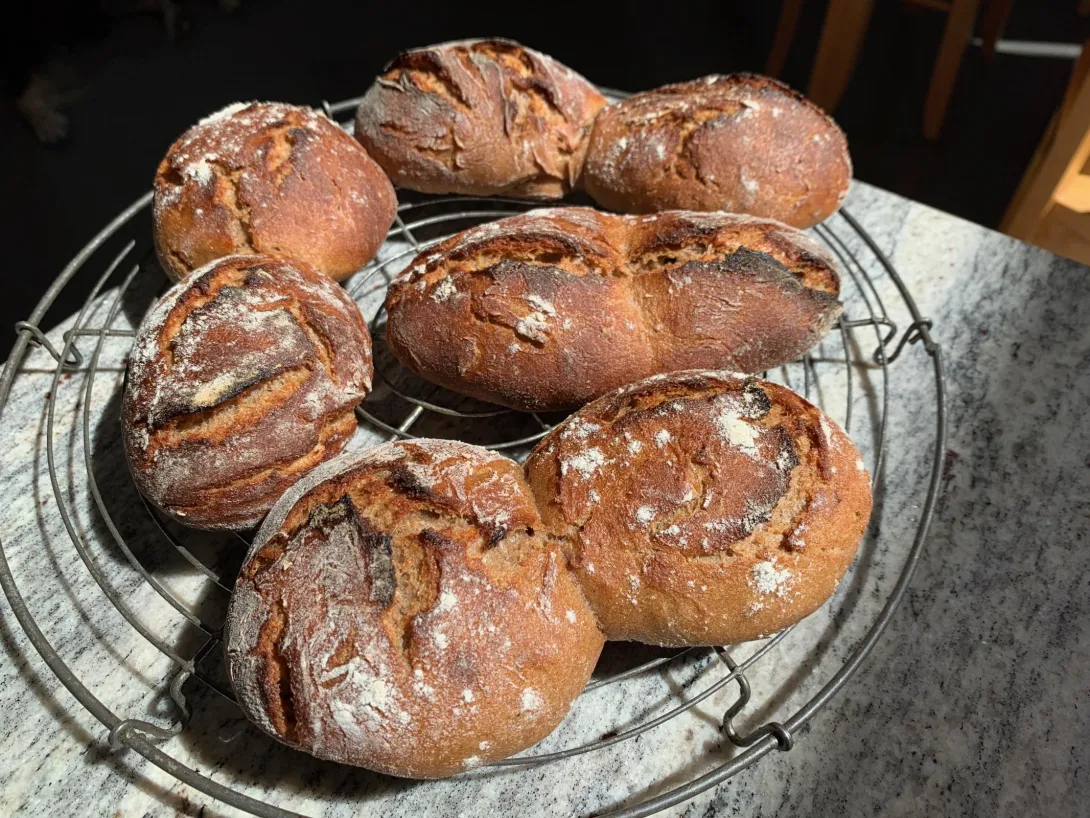
I found this at the well known German bread blog “Plötzblog”. These are little buns with a high rye content common to Southern Tyrol. This is my translation of the German recipe: https://www.ploetzblog.de/2019/03/23/vinschgauer-paarlen/
Typical for this author he uses very precise measurements and specific temperatures.
Levain:
Starter 16 g
Ryeflour (German type 997) 80g
Water 80 g @ 50°C
Salt 1.6 g
Let this rest for 12 -16 hours at room temperature.
Autolysis:
Wheat flower (German type 550, similar to all purpose flour) 80g
Water 52 g @ 20°C, i.e. room temperature
Let this rest for 30 minutes.
Main dough:
Combine levain, the dough form the autolysis
plus
Rye flour 232 g
Water 204 g @ 50°C
Liquid malt (inactive) 16 g — I used honey instead
Salt 7 g
Spices 2 - 4 g (fennel, anise, caraway, ….)
He also mentions Schabzigerklee , an herb that grows in this region https://de.wikipedia.org/wiki/Schabzigerklee but again something I can’t get my hands on, just for completeness sake.
Mix and let rest for 2.5 hours.
Spread dough on a well floured surface and separate dough pieces of 100g, shape into rounded pieces and place on parchment paper in pairs. Let sit for 60 minutes uncovered. The author specifically confirms the uncovered surface in one of his comments stating that it creates the desired rough surface.
Bake at 250°C for 20 minutes using steam.
I prepared this today, and as you may be able to see the result looks pretty good.
Try, if you like
Tom.
- Bröterich's Blog
- Log in or register to post comments
and did you take a photo of the inside? Schoene Broetchen.... Really nice and must have a look......Kat
These caught my eye as well, especially as I'm on a bit of a rye kick these days. Glad to know honey can be used instead of liquid malt. I just googled Schabzigerklee, and it would seem that it's fenugreek, but do we want the seeds or the leaves? Oh, wait, there's another site that says it's clover… confusion reigns :-D
Lovely bake, would like to see the crumb, too, like Kat!
Keep on baking,
Carole
... is similar to regular fenugreek but milder. All the parts can be used in food - I don't know the usual preparation for baking purposes though. It's well known both in bread and in cheese, in the southern German-speaking areas.
I use fenugreek seeds often, must be good in a bread spice mix. Shall give it a try when next I make a batch.
Keep on baking,
Carole